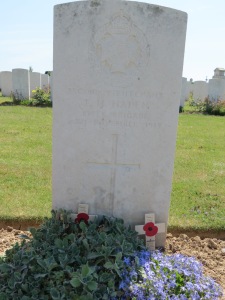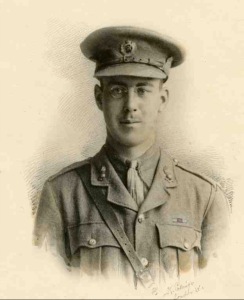| 10th November 1918
Francis Storrs, Russian Order of St Anne. F Social 1897. Lt, HMS President, Royal Navy. Intelligence Corps. Died of pneumonia contracted on active service
At school, he was a prefect, the Sewell Scholar, and won the Historical Essay Prize and the Richards Gold Medal. After school he had a distinguished career as an academic, winning an Exhibition to Wadham College, Oxford, then attending Jesus College, Cambridge as a Rustat Scholar. He became Professor at Elphinstone College, Mumbai and at Rangoon College in Burma. He qualified as a Barrister of the Inner Temple in 1911. In 1912 he married Catherine Schiff. They had two sons who both came to Radley on War Memorial Scholarships. The Storrs French Prize is still awarded in his memory.
In 1915 he served with the Russian Civil Service, then served with the Royal Navy in Greece in 1916. Details of his career as the Head of Counter-Espionage in the Aegean from 1917 were published by Compton-MacKenzie in ‘Aegean memories.’ He was working for the War Office when he died from pneumonia following influenza – a victim of the great outbreak of Spanish flu which took more lives than WW1.
‘He was gifted with a charming kindliness and geniality. A colleague in the Russian work says, ‘It was impossible to work with him without loving him.’ The enthusiastic welcome with which his visits to the Radley College Mission (of which he was treasurer) were invariably hailed by the boys, showed how he had won their hearts. But, perhaps, his most marked characteristic was an unswerving devotion to duty.’ His chief writes of him: ‘I have never known anyone so zealous’ and so devoted to his work for the country for which he has given his life.’
His influence at Radley was so great among his peers that his loss was still lamented at the 1947 Centenary: ‘No truer Radleian fell in the two world wars than Francis Storrs, who died on the eve of the Armistice in 1918. No one would have rejoiced in the centenary more than he; no Old Radleian would have contributed more to the gaiety of the day.’
Aged 35
AND
Benjamin Croft, E Social 1898. Captain, London Regt (Artists Rifles). Killed in action in an unknown engagement
At school, he was a Junior Scholar. After school he went to London University, then trained as a Chartered Accountant. From 1901, he was accountant to the Board of the Green Cloth at Buckingham Palace. He served as a member of the Artists Rifles, and was commissioned in 1898. A keen all-round sportsman, Croft led the Battalion’s victorious bayonet team at Earls Court in 1914. Soon afterwards, he went to France, was advanced to Captain and was onetime attached to the 10th London Regiment.
The Battalion’s war diary, states Croft died 24 hours before the Armistice:
10.11.18: Battalion advanced in a N.E. direction and took up a line facing N.E. N. of the Mons-Maubeurge Road at 9.30 hours. While 188th Brigade passed through Asquillies (Battalion H.Q.) enemy shelled village with 5.9 howitzers causing some damage. At midday orders were received to relieve 56th Division on right. Battalion moved at 16.00 hours S. through Harvengt and took up line just E. of Harvengt. Captain Croft, B., 2 Lieutenant King, H. W., killed; 2 Lieutenant Conway, F. H., wounded; O.Rs killed 2; wounded 25. 10 November 1918: ‘Just after they had gone, I got news by runner, that poor old Croft had been killed. It is no use trying to tell you what that meant to the Battalion, or to me personally. He had not been back with us very long after a prolonged absence, and I know he felt like coming home when he rejoined us at Brias. He was always like a ray of sunshine if there was anything doing. With him were two other good fellows. 2nd Lieutenant King and Sergeant Garbutt; also a Lancer with whom they were talking at the time; a stray shell fell in the sunken road and killed all four of them.’
He was buried at Mons – a place he had last been in August 1914.
Benjamin Croft’s war medals were sold at auction in 2010
Aged 44 |




















